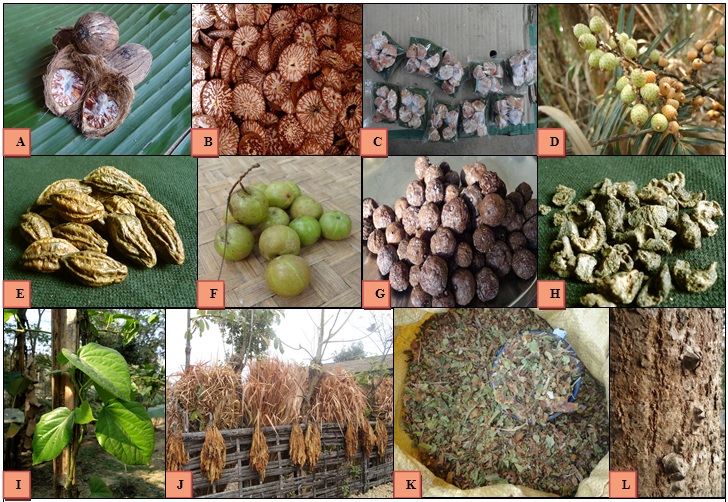"International Journal of Herbal Medicine"
Volume 2, Issue 3
Plant masticatories and their medicinal importance from Assam & Meghalaya
Author(s): Kongkona Borborah, S. Baruah and S.K. Borthakur
Abstract: Since the dawn of the civilisation plants have been associated with life and culture of human being. Apart from sources of food, certain plants have been used as masticatory by different ethnic groups throughout the world. In north eastern India, in the states of Assam and Meghalaya, certain plants have been used as masticatory by different ethnic groups and some of these pants have been claimed to have curative properties against one or the other diseases. The plant parts used as sources of masticatory includes bark, fruit, leaf and root. Interestingly, some of these masticatories are seasonal, some are used only in particular occasions and some others are used regularly and become part of the culture of the people as these masticatories e indispensable in their social and religious life also. In the present paper a total of 37 species belonging to 31 genera under 24 families has been recorded to be used as masticatory by the ethnic groups of Assam and Meghalaya. In addition to these, the curative properties of some of the plants/plant parts used as masticatory have been recorded and provided in the present communication.

Fig: A-C: Dried and fresh fruits of Areca catechu; E: Fresh fruits of Calamus erectus; E: Dried fruits of Terminalia chebula; F-H: Fresh and dried fruits of Phyllanthus emblica; I: Leaf of Piper betle; J-K: Processed leaves of Nicotiana rustica; L:Spines of Bombax ceiba.
.Download Full Article: Click Here